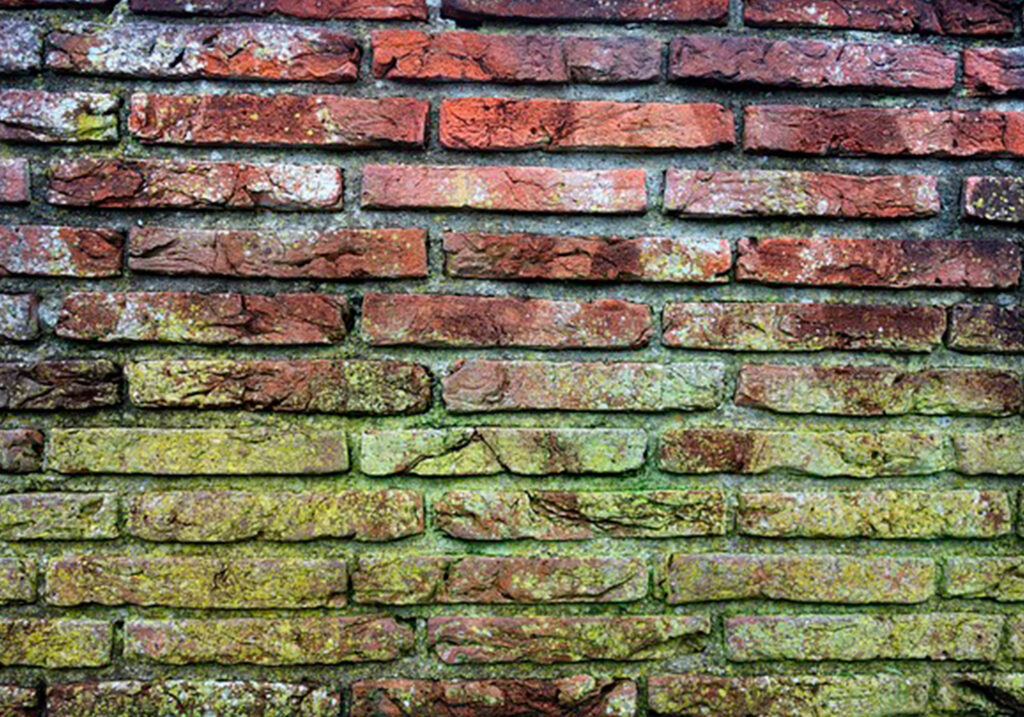A steel garage is a durable and low-maintenance storage solution. However, like any structure, it can be susceptible to mold growth if not properly designed.
Mold grows and thrives in damp, poorly ventilated environments. Once it takes hold, it can damage the structure and create health hazards. That is why designing a mold-resistant steel garage requires careful planning to ensure proper ventilation, insulation, and moisture control. Take preventative measures during the construction process so you can create a space that remains dry and mold-free for years to come.
Choosing the Right Location
The location of your steel garage plays a crucial role in preventing mold growth. Selecting an area with good drainage will help prevent moisture accumulation around the foundation. Avoid placing the garage in low-lying areas where water tends to pool after heavy rain. A slightly elevated location ensures that rainwater flows away from the structure rather than seeping into the foundation.
Another factor to consider is sunlight exposure. Mold thrives in dark, damp environments, so positioning your garage in a spot that receives ample sunlight can help deter mold growth. If possible, orient the garage doors and windows to maximize natural light and airflow, further reducing moisture buildup inside the structure.
Additionally, consider the surrounding vegetation. Trees and bushes that are too close to the garage can trap moisture against the walls and roof. Keeping foliage trimmed and ensuring proper air circulation around the structure will help prevent excess humidity from accumulating.
Selecting High-Quality Steel Materials
Not all steel is created equal, and choosing the right materials can make a significant difference in mold prevention. Opt for galvanized or coated steel that resists rust and corrosion, as rust can contribute to moisture retention and create an ideal environment for mold growth. Many steel manufacturers offer pre-treated panels with anti-microbial coatings that further reduce the risk of mold and mildew.
In addition to selecting high-quality steel, it’s important to use moisture-resistant fasteners and connectors. Stainless steel screws and bolts prevent rusting, ensuring that the structural integrity of your garage remains intact. Investing in durable materials upfront can save you from costly repairs and mold remediation in the future.
Proper Ventilation for Moisture Control
Good ventilation is one of the most effective ways to prevent mold growth in a steel garage. Without adequate airflow, humidity levels can rise, creating the perfect conditions for mold spores to flourish. Installing roof vents, ridge vents, and louvered side vents will help improve air circulation and expel excess moisture.
For garages that house vehicles, tools, or equipment that produce heat and humidity, exhaust fans can help remove damp air and maintain a stable indoor climate. If the garage has windows, opening them periodically can also aid in moisture control. In humid climates, using a dehumidifier can further reduce excess moisture, making it harder for mold to develop.
Installing a Proper Drainage System
Water intrusion is one of the leading causes of mold growth, so ensuring proper drainage around your steel garage is essential. Start with a well-designed foundation that directs water away from the structure. A concrete slab with a slight slope will help channel rainwater away rather than allowing it to pool around the edges.
Gutters and downspouts should be installed to redirect rainwater away from the roof and foundation. Regularly cleaning the gutters prevents clogs that can cause water to overflow and seep into the garage. If the surrounding soil retains moisture, consider installing a French drain system to further protect the foundation from water infiltration.
Insulation and Vapor Barriers
Proper insulation is key to controlling condensation inside a steel garage. Without insulation, temperature fluctuations can cause condensation to form on metal surfaces, creating a damp environment where mold can thrive. When warm air inside the garage meets the cooler steel walls, moisture collects and promotes mold growth. Insulating the walls and roof with moisture-resistant materials, such as closed-cell spray foam or rigid foam boards, helps regulate temperature and prevent condensation buildup. These materials not only create a thermal barrier but also add structural support to the building, enhancing its longevity.
In addition to insulation, installing a vapor barrier between the insulation and metal panels will further reduce moisture penetration. Vapor barriers prevent humid air from reaching the cold steel surfaces where condensation could form. By blocking moisture at its source, these barriers contribute to a drier indoor climate. Properly sealing seams and joints in vapor barriers is crucial to their effectiveness, ensuring that no gaps allow moisture intrusion.
Using high-quality insulation materials combined with an effective vapor barrier will create a more stable indoor environment, reducing the risk of mold growth. Choosing insulation with antimicrobial properties provides an added layer of defense against mold and mildew. Additionally, investing in professional installation can ensure that insulation and vapor barriers are applied correctly, preventing moisture-related problems in the long run.
Choosing Mold-Resistant Interior Finishes
If you plan to finish the interior of your steel garage, selecting mold-resistant materials is essential. Traditional drywall can absorb moisture and foster mold growth, making it unsuitable for a steel garage where humidity levels may fluctuate. Instead, opt for mold-resistant drywall or cement board, which are designed to resist water absorption and inhibit mold development. These materials provide a durable, long-lasting surface while maintaining a clean and healthy indoor environment.
Avoid carpeting, which can trap moisture and become a breeding ground for mold spores. Instead, consider hard flooring options such as sealed concrete, epoxy coatings, or tile, which are all resistant to moisture absorption. These surfaces are easy to clean and maintain, preventing the accumulation of dust and organic matter that can encourage mold growth. Proper drainage and floor sealing can further reduce the risk of moisture-related issues.
Using mold-resistant paint on walls and ceilings provides an extra layer of protection against mold growth. These paints contain antimicrobial agents that help inhibit mold and mildew formation, making them an excellent choice for a steel garage. When selecting finishes, prioritize materials with mold-resistant additives to create a garage environment that remains dry and resistant to microbial infestations over time.
Controlling Indoor Humidity Levels
Even with proper ventilation and insulation, indoor humidity levels can rise due to seasonal changes or garage activities. High humidity can lead to condensation and mold growth, making it essential to monitor and control moisture levels. Keeping humidity levels below 50% will significantly reduce the risk of mold development. Installing a hygrometer to measure indoor humidity levels allows you to take action before mold becomes a problem.
If the garage is frequently exposed to high humidity, using a portable dehumidifier can help maintain a dry indoor environment. Dehumidifiers extract excess moisture from the air, preventing condensation on metal surfaces. Additionally, air conditioners can be used during hot and humid seasons to regulate indoor temperatures and humidity levels. Placing moisture-absorbing materials such as silica gel packets or activated charcoal in enclosed areas can also help control humidity.
In colder months, running a small space heater can prevent condensation from forming on metal surfaces. Warmer air holds more moisture, so keeping a steady indoor temperature can help reduce water vapor accumulation. Storing items in moisture-proof containers rather than cardboard boxes will prevent mold from spreading to stored belongings. Regularly inspecting stored items for signs of mold and removing any affected materials promptly will help maintain a clean and mold-free environment.
Regular Maintenance and Inspections
Preventing mold growth requires ongoing maintenance and vigilance. Regularly inspecting your steel garage for signs of moisture buildup, leaks, or rust will allow you to address issues before they become serious problems. Conducting routine checks on the roof, walls, and foundation can help identify cracks, gaps, or leaks that may allow water infiltration. Sealing any openings with waterproof caulking or weatherproofing materials will ensure long-term protection against moisture.
Cleaning your garage periodically also helps prevent mold spores from settling. Wiping down surfaces with mold-resistant cleaning solutions, sweeping out dust and debris, and ensuring proper ventilation will keep the space dry and mold-free. Investing in a ventilation system, such as exhaust fans or vents, will promote consistent airflow, preventing moisture buildup that could lead to mold growth.
If any mold spots appear, addressing them immediately with a mold-killing solution will prevent further spread. Using a solution of white vinegar or hydrogen peroxide can effectively eliminate mold spores without introducing harmful chemicals into the garage environment. Taking proactive steps to clean and maintain the space will ensure that your steel garage remains mold-resistant and structurally sound for years to come.
Conclusion
Designing a mold-resistant steel garage requires a combination of smart planning, quality materials, and regular maintenance. By selecting the right location, installing proper ventilation and insulation, and ensuring effective moisture control, you can create a garage that remains dry, durable, and mold-free. Investing in preventative measures during the construction phase will save time and money in the long run, allowing you to enjoy a safe and functional space for years to come. With the right design choices, your steel garage can provide reliable protection against mold and environmental damage, making it a worthwhile addition to your property.

